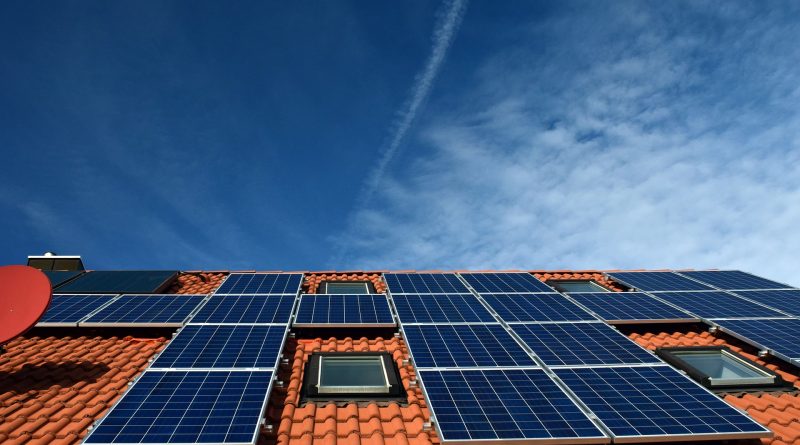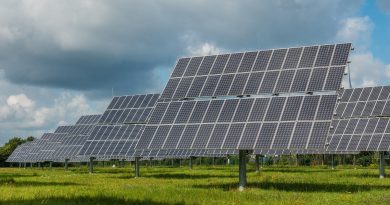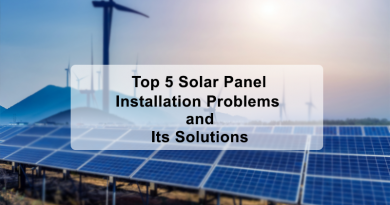Grid-Tied Solar Electric System: Explained
Solar energy has emerged as a sustainable and efficient alternative to traditional sources of electricity. With advancements in technology, solar electric systems have become increasingly popular among homeowners and businesses. Among the various types of solar energy systems, grid-tied solar electric systems stand out as an innovative way to harness the power of the sun. In this article, we will delve into what a grid-tied solar electric system is, its components, how it works, and the benefits it offers both environmentally and economically.
What is a Grid-Tied Solar Electric System?
A grid-tied solar electric system, also known as a grid-connected solar electric system or grid intertied system, is a type of solar power system that connects to the electrical grid. Unlike other solar energy systems, grid-tied systems utilize the grid as a backup power source and allow excess electricity to be sent back to the utility company for credit.
Components of a Grid-Tied Solar Electric System
To understand how a grid-tied solar electric system operates, it is essential to familiarize ourselves with its key components:
1. Solar Panels (Photovoltaic or PV Panels): These are the primary components of a grid-tied solar electric system. Photovoltaic panels convert sunlight into direct current (DC) electricity through the photovoltaic effect. These panels consist of multiple solar cells made from semiconductor materials, such as silicon, that generate an electric current when exposed to sunlight.
2. Inverter: The inverter plays a crucial role in a grid-tied system as it converts the DC electricity produced by the solar panels into alternating current (AC), which is the form of electricity used by most electrical devices and the grid.
3. Electrical Meter: A bidirectional meter measures both the electricity produced by the solar panels and the electricity consumed from the grid. This meter plays a pivotal role in monitoring the energy flow in both directions. Consequently, it provides a comprehensive overview of the system’s performance, enabling you to track the solar energy contribution and grid consumption with precision.
4. Electrical Grid: The electrical grid serves as the primary power source when the solar panels do not generate sufficient electricity to meet the demand. Additionally, it acts as a storage facility for excess solar energy, providing the option to export it back to the utility company.
How Does a Grid-Tied Solar Electric System Work?
The operation of a grid-tied solar electric system can be summarized in a few simple steps:
1. Solar Panel Generation: When sunlight strikes the solar panels, they produce DC electricity. Electricity generation depends on factors like sunlight intensity, panel angle, and overall system efficiency.
2. Inverter Conversion: The DC electricity generated by the solar panels is seamlessly converted into AC electricity by the inverter. Consequently, this crucial process ensures optimal compatibility with the electrical appliances and devices in your home or business. As a result, you can efficiently power your existing equipment with the solar-generated energy, thereby enhancing the overall efficiency and seamless integration of the system.
3. Power Consumption: The inverter converts DC electricity to AC, powering the electrical loads in your home or business. Any excess electricity is directed to the electrical grid.
4. Grid Interaction: During times when the solar panels produce insufficient electricity to meet the demand, the electrical grid automatically provides the necessary power. Conversely, when the solar panels generate more electricity than required, the excess energy is sent back to the grid.
5. Net Metering: Net metering is a billing arrangement that allows for the exchange of excess electricity with the utility company. The surplus electricity fed into the grid during periods of high solar generation credits the customer’s account. This credit can be used when the solar system does not generate enough power, such as at night or during cloudy days.
Benefits of a Grid-Tied Solar Electric System
The grid-tied solar electric system offers several advantages to homeowners, businesses, and the environment. Some notable benefits include:
1. Reduced Electricity Bills: Installing a grid-tied solar electric system allows for significant savings on electricity bills. Moreover, by generating your own clean energy, you rely less on the electrical grid, mitigating the impact of rising energy costs. This sustainable approach not only benefits your wallet but also contributes to a more eco-friendly lifestyle.
2. Environmental Sustainability: Switching to solar energy helps reduce reliance on fossil fuels, decreasing carbon emissions and contributing to a cleaner environment. Grid-tied systems enable the seamless integration of renewable energy into the existing power infrastructure.
3. Financial Incentives: Many countries and local governments offer financial incentives, such as tax credits and rebates, for installing grid-tied solar electric systems. These incentives make the initial investment more affordable and accelerate the return on investment.
4. Energy Independence: Generating your own electricity allows for energy independence by reducing dependence on the grid. Grid-tied systems with battery backup ensure uninterrupted power for critical loads during outages or peak demand.
Conclusion
Join the solar revolution with grid-tied solar electric systems from SolarClue®! Experience a sustainable and economically viable solution that not only reduces your electricity bills but also contributes to a greener future. Harness the power of the sun for environmental sustainability, financial incentives, and energy independence. As technology advances, grid-tied solar electric systems are at the forefront of the global shift towards renewable energy.
Make the smart choice for your home or business – embrace solar with SolarClue® and become a proactive part of the solution to combat climate change. Take the leap into a cleaner, brighter, and more sustainable future today! By choosing SolarClue®, you not only benefit from efficient and cost-effective solar solutions but also contribute to the global effort of reducing carbon footprints and fostering a greener planet. Join us on the journey towards a brighter and more sustainable tomorrow.
Frequently Asked Questions
A grid-tied solar electric system is a setup that generates electricity using solar panels and is connected to the local power grid, allowing for efficient energy use and potential excess energy feed-in.
Unlike off-grid systems, grid-tied solar systems remain connected to the power grid, providing continuous electricity even when solar generation is low.
Key components, such as solar panels, inverters, a grid connection point, and sometimes a monitoring system, are integral to a grid-tied solar electric system. Notably, inverters play a crucial role by converting solar-generated DC electricity to AC for seamless use in your home.
In most cases, grid-tied systems shut down during power outages to ensure the safety of utility workers. However, some systems offer backup power solutions.
Benefits include reduced electricity bills, potential revenue from excess energy sales, and the ability to draw power from the grid when solar generation is low.
Typically, grid-tied systems do not require energy storage as they can draw power from the grid when needed. However, some systems incorporate batteries for backup power.
Many regions offer incentives like tax credits or feed-in tariffs to encourage the adoption of grid-tied solar systems, promoting sustainable energy practices.
Installation times vary but are generally shorter than off-grid systems. A residential installation may take a few days to a couple of weeks.
Yes, in many areas, grid-tied systems allow users to sell surplus electricity back to the grid, contributing to cost savings and promoting renewable energy.
Grid-tied systems can be effective in various climates, but their performance depends on factors like sunlight availability and local regulations. Proper design is essential for optimal results.



